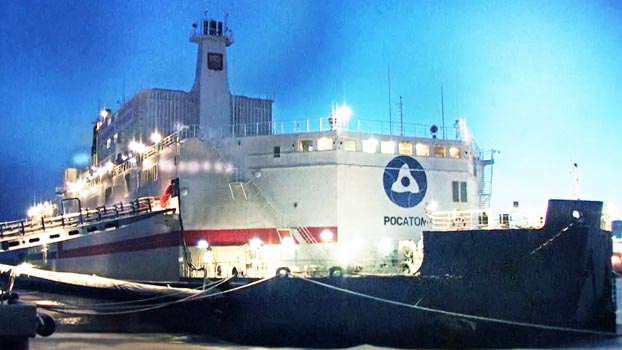World’s first floating NPP crosses 10m kWh electricity supply

World’s first ever floating nuclear power plant (FNPP) Akademik Lomonosov in Russia has delivered its first 10 million kWh of electric power to network of the isolated Chauny-Bilibino hub in the Chukotka Autonomous Region of the country. The power plant was connected to the grid on December 19, 2019, said in a press release.
As of now, the FNPP caters for one fifth of the Chauny-Bilibino hub’s needs, and it is intended to eventually fully cover the growing demand for electric power in Chukotka.
‘The electricity produced by the FNPP will facilitate the growth of the gold, copper and other natural resources mining companies in Chukotka. Additionally, it will be one of the key elements in the infrastructure of the Northern Sea Route’, said Vitaliy Trutnev, Director of Rosenergoatom, a concern of Rosatom, Russia’s state atomic energy corporation.
Globally reputed ‘Power’ magazine has termed the connection of the floating NPP into the grid as one of the key nuclear power events in 2019. The project was welcomed by scientists, nuclear energy experts and environmentalists across the world.
Kirsty Gogan, Head of Energy for Humanity, a London based NGO, said, “For hard-to-reach regions, with a climate that is simultaneously too harsh to support the use of renewable energies and too fragile to continue its heavy dependence on fossil fuels, small nuclear, including floating plants, is the only answer. Akademik Lomonosov is the first step towards demonstrating its potential for decarbonisation of the Arctic and beyond.”
Akademik Lomonosov is a pilot project and a ‘working prototype’ for a future fleet of floating nuclear power plants and on-shore installations based on Russian-made Small Modular Reactors (SMRs). The small power units will be available for deployment to hard-to-reach areas of Russia’s North and Far-East, as well as for export.
Akademik Lomonosov is equipped with two KLT-40C reactor systems (each with a capacity of 35 Mw) similar to those used on icebreakers. Akademik Lomonosov is 144 metres long and 30 metres wide, and has a displacement of 21,000 tonnes.
SMR-based nuclear power plants (featuring reactors of less than 300MWe each), floating and on-shore, can operate non-stop without the need for refueling for three to five years, thereby considerably reducing the cost of electricity generation. The plant can be delivered to any point along a coast and connected to existing electricity grids.




